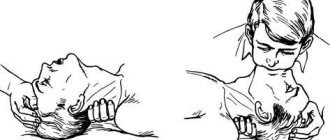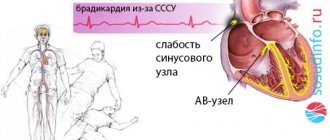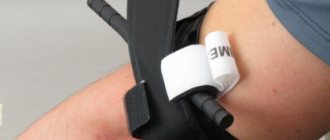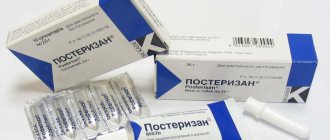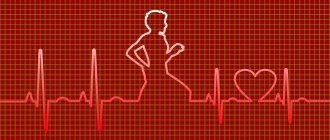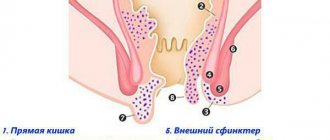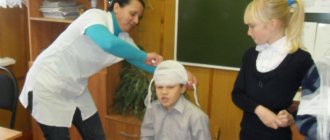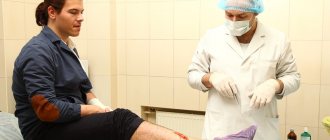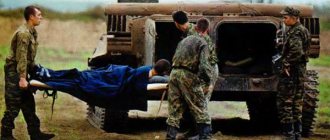Nosebleeds can start for a variety of reasons. It can be traumatic, postoperative, spontaneous and is usually caused by damage to the vessels of the nasal mucosa. Sometimes it goes away quickly on its own, but sometimes emergency treatment for nosebleeds is required. This phenomenon can have a different nature of occurrence and different intensity. It can begin unexpectedly, even at night during sleep, but in some cases it may be preceded by symptoms such as headaches, tinnitus, and general weakness.
Why does it happen?
The reasons are usually divided into general and local. The first include:
- cardiovascular diseases: hypertension, atherosclerosis, heart defects, vascular anomalies;
- kidney and liver diseases;
- hormonal imbalance;
- diseases of the circulatory system;
- hemorrhagic diathesis;
- violation of hemostasis;
- infectious diseases;
- sun and heatstroke;
- bleeding as a result of changes in atmospheric pressure (when diving to depth, when climbing to a height for climbers, pilots).
Local reasons include:
- any trauma to the nose, including foreign objects, surgery, medical procedures;
- formations in the nasal cavity;
- plethora with chronic and acute sinusitis and rhinitis, with adenoids;
- dystrophic changes in the nasal mucosa (deviated septum, atrophic rhinitis).
Each individual case requires an individual approach after examination and diagnosis. First aid for nosebleeds is necessary before going to the hospital or before the ambulance arrives.
Types of nosebleeds
If you have a nosebleed, you should not tilt your head back; you should tilt it slightly forward and pinch your nose with your fingers.
They vary in intensity and duration. Depending on the location, they are divided into anterior and posterior.
More than 90% of all nosebleeds are localized in the anterior nasal septum. Here is the so-called Kisselbach area, which is also called the bleeding area. Frequent damage to blood vessels in this area is due to the fact that there are many interconnected capillaries. In addition, the mucous membrane here is thin and has practically no submucosal layer. The vessels located in this place can be damaged even from minor mechanical influences or when pressure increases.
Bleeding with such localization is not dangerous to life and health, it does not differ in intensity and quickly stops on its own. In this case, the simplest measures are sufficient.
Posterior bleeding is caused by damage to larger vessels located in the deep layers of the nasal cavity. In this case, significant blood loss occurs, which can be life-threatening. It is usually impossible to stop bleeding at home; specialized help is required.
Symptoms depend on the intensity and location, the amount of blood lost, gender, and age. Bleeding varies in severity:
- minor – there are no pathological symptoms, there is no danger, from a few drops to several tens of milliliters of blood are lost;
- mild - about 500 ml can be lost in an adult (about 10%), there is pallor of the mucous membranes and skin, weakness, flies flashing before the eyes, dizziness, a feeling of thirst, tinnitus, palpitations;
- medium - about 15-20% of blood is lost, symptoms intensify, pressure drops, shortness of breath and tachycardia appear;
- severe - with losses of more than 20%, hemorrhagic shock occurs, manifested by lethargy, thread-like pulse, increasing tachycardia, a sharp decrease in pressure, and impaired consciousness.
Symptoms
Stopping nosebleeds
In some cases, nosebleeds can begin suddenly, against the background of complete health, sometimes even during sleep; in other cases, patients note increasing symptoms: headache, tinnitus, weakness, dizziness, weakness. The blood from nosebleeds is clear and bright red. If bleeding was preceded by a head injury, and blood flows from the nasal cavity in a yellowish color, you should urgently consult a doctor, as this may indicate a fracture of the base of the skull. Sometimes the bleeding can stop spontaneously, but sometimes it can continue for a long time, causing a drop in pulse rate and fainting.
Some bleeding may go unnoticed due to blood draining down the back of the throat. Such bleeding is mainly typical for children or bedridden patients. Increasing pallor, weak rapid pulse, and bloody vomiting indicate the presence of such bleeding.
The diagnosis does not present any particular difficulties. It is more difficult to determine the source of bleeding. In cases where it is not possible to detect a bleeding area in the nasal cavity, it is necessary to find out whether this bleeding is nasal bleeding, or indicates deeper lesions of other organs or systems.
Treatment of nosebleeds in adults and children consists of various methods of stopping existing bleeding, as well as timely treatment of chronic diseases that cause these phenomena.
What does first aid consist of?
The most common location for bleeding is the anterior third of the nasal septum. First aid for nosebleeds in this case is quite simple, and the bleeding stops quickly.
Bleeding from the back of the nose, where large vessels pass, is dangerous. They may not be noticeable, since the blood drains through the pharynx into the stomach, and only the onset of vomiting will be its first sign.
Usually the blood comes from one nostril. Most often this is due to high blood pressure, trauma to the nose, weak vessels of the mucous membrane, and sharp blowing of the nose.
If your nose bleeds, apply cold to the bridge of your nose.
Emergency assistance consists of the following:
- Sit the patient down and tilt his head down and slightly forward, but do not tilt it back, as many do, so that blood does not enter the stomach. In this case, control over the volume of blood flowing out will be lost, and vomiting may begin.
- Pinch your nose slightly below the bridge of the nose with your fingers for ten minutes and breathe through your mouth. At the same time, you should not swallow, blow your nose, or talk. All of this can prevent the formation of a blood clot.
- You can put cold on the bridge of your nose: ice wrapped in cellophane and a rag, frozen food from the refrigerator, metal objects.
- Insert tampons made from bandage or gauze into the nostrils. Before use, soak the tampon in hydrogen peroxide (3%), which helps stop bleeding.
What to pay attention to. If the blood has a pale, yellowish color, you should immediately go to the hospital. This may be a sign of a fracture of the base of the skull if there is trauma to the face and head.
If the bleeding does not stop within half an hour, you should urgently contact a traumatology department or an otolaryngologist after first aid has been provided. Prolonged bleeding may result in shock. In this case, complex tamponing is necessary, which is carried out only by a medical professional.
If a nose bleeds as a result of overheating or prolonged exposure to the sun, the patient should be transferred to the shade and provided with comfortable conditions using a fan or air conditioner.
If a person suffers from chronic hypertension, then as a result of a sharp rise in pressure, nosebleeds may occur. In addition to measures to stop bleeding, the patient needs to be given a blood pressure reducer, which he usually takes. It should be said that with hypertension, nosebleeds can reduce blood pressure.
If the cause is a foreign object lodged in the nasal passage, you should not try to remove it yourself. Displacement of the body may result in it entering the respiratory tract and causing suffocation.
Methods of stopping blood can be divided into local and general. In the first case, the effect occurs directly on the nasal area: applying cold, pressing the wings against the septum with your fingers, tamponade, and in some cases, surgical intervention. Sometimes measures of general influence on the body may be required. For example, if blood clotting is poor, drugs that increase it are needed, for example, calcium chloride (10%) orally or intravenously, vitamin K, rutin and others. Blood transfusions may be needed in particularly severe cases.
First aid for nosebleeds
Emergency assistance should be provided to any victim, regardless of the intensity of blood loss and accompanying symptoms. Try to take the correct position or, if the child is bleeding, sit him on a chair/chair/sofa, slightly tilting his shoulders and head forward. So the blood, together with other fluids, will flow outward, and not into the internal space. The main thing is not to lie on horizontal planes so that blood does not get into the throat (this can cause nausea and vomiting).
Pinch your nose with your thumb and index finger for 10 minutes to stop blood loss. Adjust the force depending on the age, gender and condition of the victim. At the same time, place a cold object on the bridge of your nose and rinse your mouth with cold water. Cold reduces blood flow to the nasal cavity, which can reduce or completely stop blood loss. If the condition has not stabilized after 10 minutes, hold your nose for another 10 minutes before seeking emergency medical help. If the manipulations were successful, carefully rinse the nasal cavity and rest for 3-4 hours.
All this time, the victim should not make sudden movements, talk, cough, blow his nose, swallow blood, or influence the nasal cavity in any way. Wait for a specialist, follow his recommendations and most importantly, don’t panic. During epistaxis and for 1-2 hours after it, it is advisable to breathe only through the mouth, so as not to further harm the mucous membrane. For the first 3-4 hours after the bleeding has stopped, the victim should be in the most calm and comfortable conditions for him. Active physical or psycho-emotional stress can trigger a relapse.
In what cases should you consult a doctor? Frequently recurring nosebleeds are a clear reason for an unscheduled examination. First, consult a general practitioner, take the necessary list of tests and wait for instructions from a specialist. In what cases should you call an ambulance or go to the hospital? If more than 20 minutes have passed since the start of bleeding (subject to the above recommendations), blood is released from both nostrils or simultaneous bleeding occurs from the ear, urethra, or another part of the body. If your health is suspicious, but the blood loss has been stopped, you can also contact a specialist to verify your health.
The body is a well-coordinated system that does not cause unnecessary failures. Any disturbance in it can be triggered by a virus, injury, infection or other pathogenic factor. Don't be afraid to ask your doctors questions and visit a specialist frequently. Your life may depend on these actions.
What not to do?
For nosebleeds it is not recommended:
- Throw your head back so that blood does not flow into the throat, esophagus and stomach.
- Blow your nose so that the blood clot that forms is not damaged, otherwise the bleeding will start again.
- Make tampons from cotton wool, the fibers of which stick to the walls of the nasal passages, and when they are removed, the vessels are injured.
- Do not put any drops into your nose. They can provoke swallowing or gagging movements, which will prevent the formation of a blood clot.
Which doctor should I contact if nosebleeds occur frequently?
You need to consult an otolaryngologist. The doctor may order a general blood test with a hemorrhagic component. This will make it possible to determine several indicators at once, including finding out how long the bleeding lasts, what the number of platelets is, and whether blood clotting is reduced. In the latter case, the doctor may recommend special medications, and after the required time after taking them, monitor this indicator again.
It happens that tests give excellent results, but the cause of nosebleeds lies in a specific vessel. In this case, just two visits to the doctor are enough to solve this problem. During your first visit, the doctor will cauterize the vessel, and the next time he will check whether healing is proceeding normally and remove the crust that has formed. For this, a special swab moistened with oil is used, so there will be no unpleasant sensations.
Bleeding in children
Nosebleeds are a common occurrence in children. Even with minor bleeding, the child may panic and even faint. Prolonged and severe, it can pose a health hazard: it weakens the body’s defenses, leads to developmental delays and anemia. The algorithm for helping a child is as follows:
- Reassure your child as anxiety increases bleeding.
- Do not allow the nose to move or blow, convince the child to press the wings against the septum with his fingers below the bridge of the nose.
- After the bleeding stops, so that the mucous membrane does not dry out, carefully lubricate the inside of the nostrils with Vaseline using a tampon.
- After providing first aid, you should go to the hospital, as bleeding may occur again. In addition, the child will need to be examined to find out the true cause. This could be a blood disease, poor clotting, pathologies of the liver, heart, lungs, kidneys, and more.
